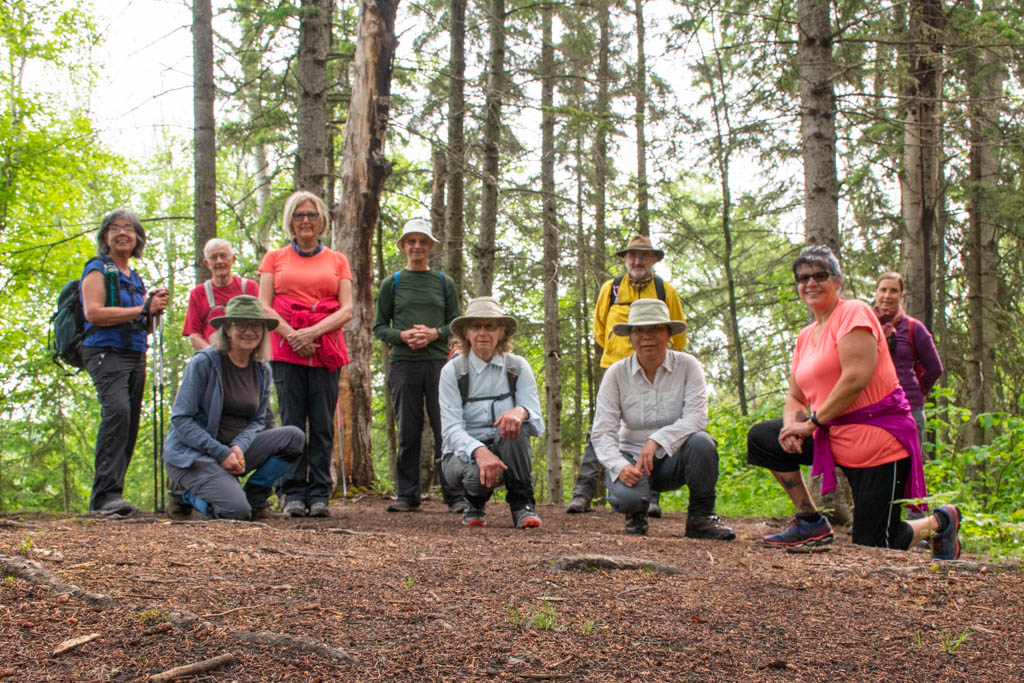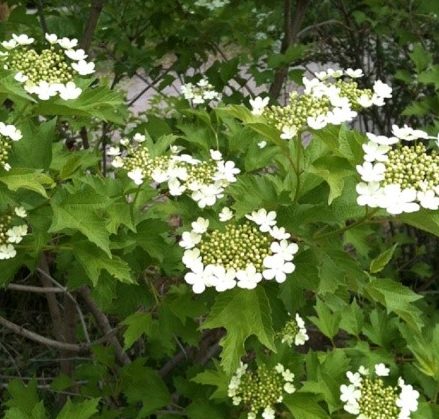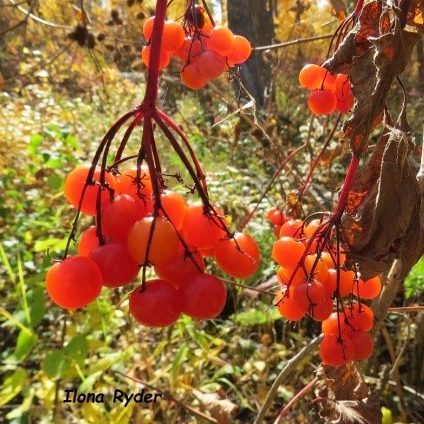Ten people came out to Devon to hike the trails from Voyager Park westward. The hike began with an easy paved path along the North Saskatchewan River. Soon, we turned up and onto the “Legs of Fire Stairs”, which sounds like quite a feat, but it’s manageable when you take it at your own pace.
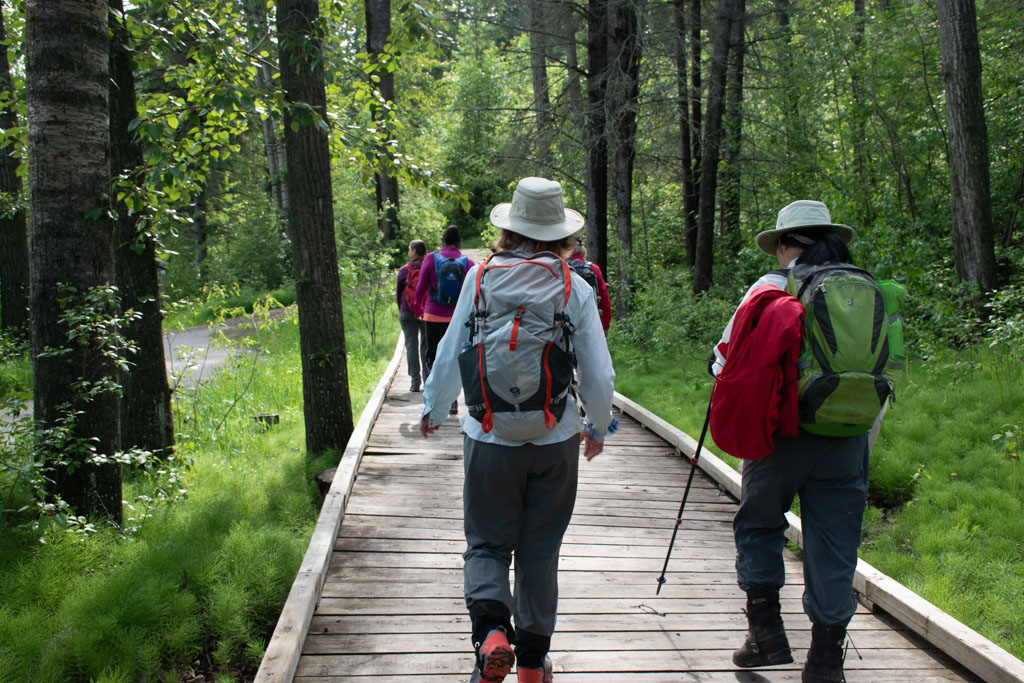
Everywhere along the trail we saw high bush cranberries in full bloom.
Also blooming was dogwood, bunchberry, and columbine.
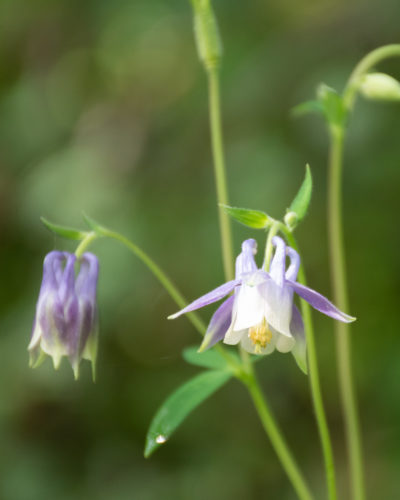
The path took us back down to the river’s edge, along the golf course and up to the Lions Park Campground, where we had our lunch. From there, we headed away from the river and into the ravine but we soon veered right to take the slope up to the hoodoo formation.
Walking now past the back side of the campground, we walked the path through the shaded, fern-covered woodland, eventually arriving at the street. We returned by way of the edge of the town park, ending with the descent to the parking lot on a superb bike path.
The hike was a perfect loop with no backtracking. Thanks to Lee, who looks for these perfect loops, for scouting the route and for leading this hike. You can find more photos on Flickr.
